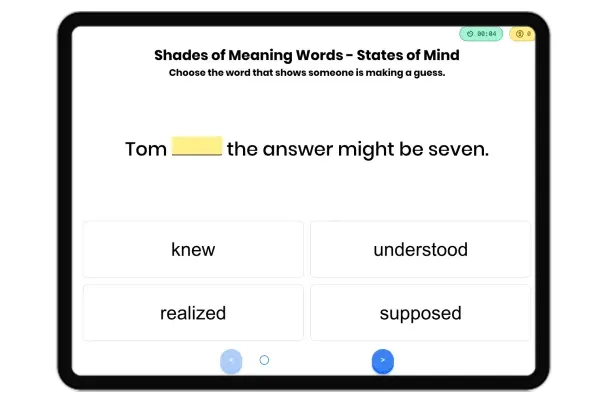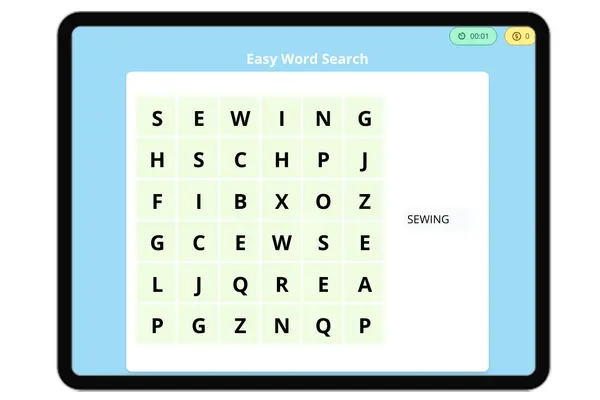Literal and Nonliteral Language Worksheet
- 3
- L.3.5.A
- L.3.5
- RL.3.4
This learning resource is available in interactive and printable formats. The interactive worksheet can be played online and assigned to students. The Printable PDF version can be downloaded and printed for completion by hand.
About the "Literal vs. Nonliteral Language" Worksheet
Literal vs. Nonliteral Language
This interactive and printable worksheet focuses on the distinction between literal and nonliteral language, providing students with an opportunity to explore and understand figurative expressions. The worksheet begins by clearly defining literal language as "language that is true to fact" where words mean exactly what they say, and nonliteral language as "language that is not true to fact" where words are used to create a mental picture. Students are then presented with a chart containing various nonliteral phrases, challenging them to interpret and write down the actual meanings of these expressions.
The worksheet includes popular idioms such as "hit the hay," "piece of cake," and "apple of my eye," among others. By working through these phrases, students develop their ability to recognize and interpret figurative language, an essential skill for reading comprehension and effective communication. The exercise not only enhances vocabulary but also promotes critical thinking as students must analyze the context and cultural significance of each expression to derive its true meaning. This activity serves as an excellent tool for bridging the gap between literal understanding and the more nuanced aspects of language use in everyday situations.
What will your child learn through this worksheet?
- Differentiate between literal and nonliteral language
- Interpret common idiomatic expressions
- Enhance reading comprehension skills
- Develop critical thinking abilities in language analysis
Learning Outcomes
Cognitive
- Correctly interpret at least 7 out of 9 nonliteral phrases provided in the worksheet
- Explain the difference between literal and nonliteral language using their own words and examples
Psychomotor
- Write clear and concise explanations for each nonliteral phrase in the given chart
- Create original sentences using at least 3 of the nonliteral phrases from the worksheet
Affective
- Demonstrate curiosity about the origins and cultural significance of idiomatic expressions
- Show appreciation for the creative use of language in everyday communication
Interpersonal/Social
- Engage in discussions with peers about the meanings and usage of nonliteral phrases
- Collaborate with classmates to identify and share additional examples of figurative language from their own experiences
Tags
Literal language, nonliteral language, idioms, figurative expressions, reading comprehension, language analysis, vocabulary development, critical thinking
Common Core Standards Covered
Perfect For:
- • Classroom assignments
- • Auto-graded assessments
- • Printable handouts
- • Home learning support
- • Homework help
- • Skill reinforcement
- • Curriculum planning
- • Self-paced learning
- • Progress tracking




















